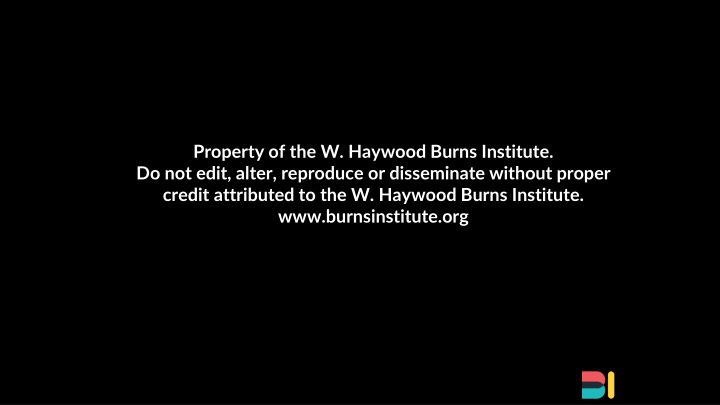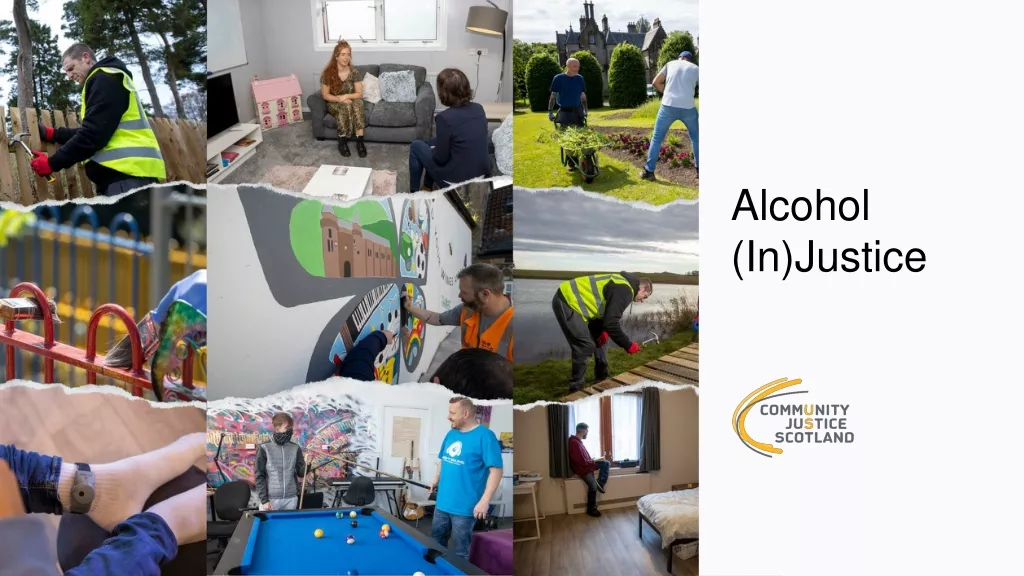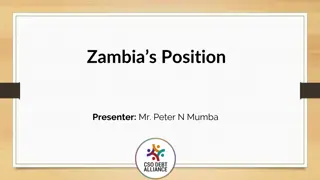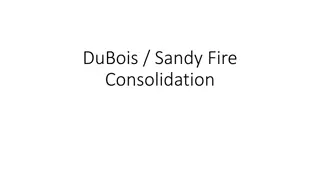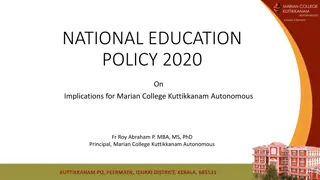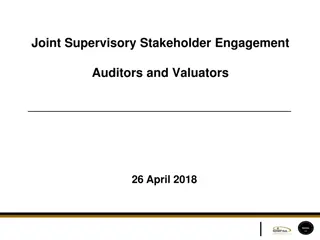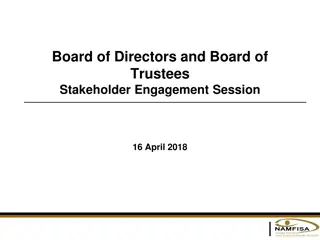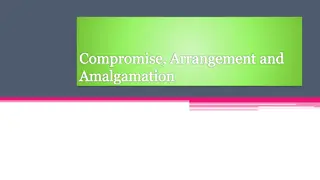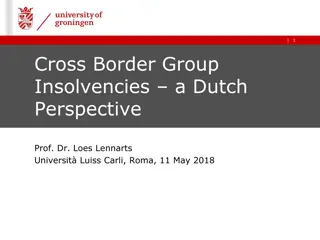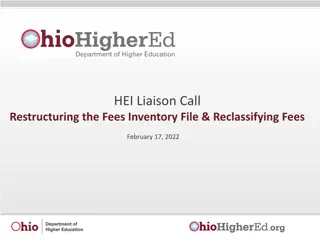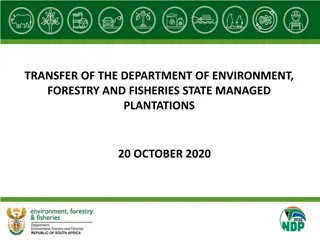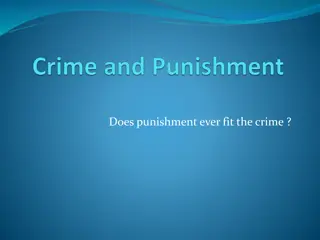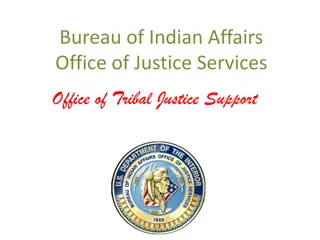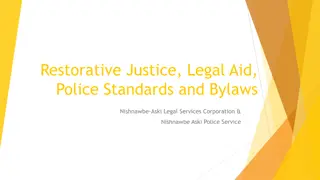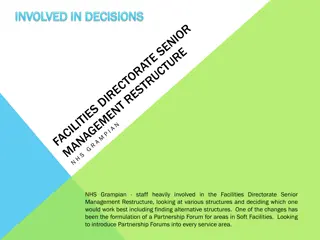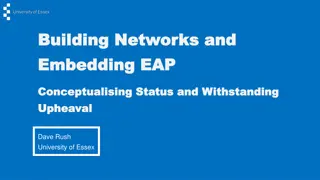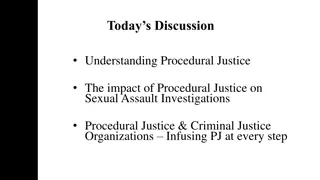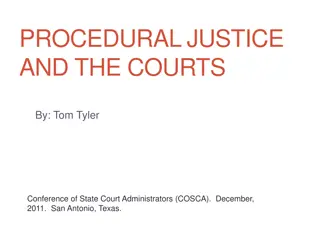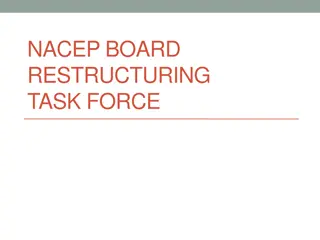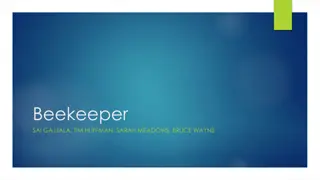Restructuring for Improved Effectiveness in Justice Initiatives
The W. Haywood Burns Institute outlines the need for restructuring based on past challenges in communication, roles, and information gathering. The plan includes restructuring major components, subcommittees, and focusing on community alternatives and rehabilitative solutions in justice practices.
Download Presentation

Please find below an Image/Link to download the presentation.
The content on the website is provided AS IS for your information and personal use only. It may not be sold, licensed, or shared on other websites without obtaining consent from the author.If you encounter any issues during the download, it is possible that the publisher has removed the file from their server.
You are allowed to download the files provided on this website for personal or commercial use, subject to the condition that they are used lawfully. All files are the property of their respective owners.
The content on the website is provided AS IS for your information and personal use only. It may not be sold, licensed, or shared on other websites without obtaining consent from the author.
E N D
Presentation Transcript
Property of the W. Haywood Burns Institute. Do not edit, alter, reproduce or disseminate without proper credit attributed to the W. Haywood Burns Institute. www.burnsinstitute.org
SF CJHWG MID COURSE CORRECTION December 16, 2020
Restructuring Necessary Based Upon Prior Years Experience Number of Meetings Unsustainable Confusion about Roles and Authority Communication Difficult across Platforms Transition from Information Gathering to Recommendations
Major Components Restructure Sub-committees Implement Learning Exchanges Complete Listening Sessions Establish and Monitor Benchmarks Liaisons with Courts, County Attorneys, Buildings etc. Youth Artwork (logo)
Current Subcommittee Structure Proposed Subcommittee Structure 1. Mental Health and Program 2. Data and Needs Assessment 3. Reinvestment and Policy 4. Facilities 5. Labor 1. Expand Community Alternatives 2. Rehabilitative Non-Institutional Place of Detention
Subcommittee #1: Expand Community Alternatives Subcommittee Focus: 1. Shrink the footprint of legal processes that do not require judicial approval. 2. Expand and enhance pre-arrest and pre-referral diversion opportunities. 3. Explore strategies for reducing secure detention exposure for technical or non-new law violations (including but not limited to bench warrants and placement related detention). 4. Explore opportunities to expand access to youth-serving resources that serve as alternatives to formal legal processes that are founded on principles of youth development and are community centered. 5. Explore opportunities to coordinate and fund expanded youth-serving resources.
Subcommittee #2: Rehabilitative Non-Institutional Place of Detention Subcommittee Focus: Build on findings from Data and Needs Assessment Report #1, regular data reports from SFJPD and forthcoming analysis and case file review from AIR to: 1. Establish criteria for selection of Non-Institutional Place of Detention 2. Explore Non-Institutional Place of Detention for these populations: 1. Awaiting detention hearing (24-72 hrs, pending analysis) 2. Awaiting adjudication (20 days, pending analysis) 3. Awaiting disposition (10 days, pending analysis) 4. Awaiting placement (wide range, pending analysis) 5. Youth awaiting adult adjudication (1 year in) 3. Explore Policy that impacts detention length, e.g: Hearing expedition Location of hearings **Note: Judicial Approval Required**
Learning Exchanges Goal: Learn from experts across the nation who are instrumental in engaging shifts in their administration of justice that expand community alternatives and/or establish new models for rehabilitative, non-institutional place of detention. Planned Learning Exchanges: 1. Diversion(Taylor Schooley, LA County Division of Youth Development and Diversion) 2. Community Based Diversion (David Muhammad & Meredith Desautels, Oakland PD) 3. Alternative Rehabilitative Community (ARC) Tour (Daniel Elby, ARC Founder) 4. Restorative Justice (Impact Justice) 5. Budget Realignment (Clinton Lacey, Director of District of Columbia Department of Youth and Rehabilitative Services (DYRS)
Listening Sessions Goal: Solicit input from a broad array of community and stakeholder partners to ensure diverse input is meaningfully reflected in final recommendations. Planned Listening Sessions: Parents Youth on Probation Youth in Juvenile Hall 707b Juvenile Hall Probation Staff School Staff Health/Mental Health Staff Prosecutors/Defense
Projected Timeline Jan Feb March April May June July Aug Sept Oct Nov December System Mapping of Enhancements and Off Ramps (See BRP Map) Learning Exchanges Identification of potential places Funding for Expanding Infrastructure Recs Completed Begin Phased Transition Criteria for Selection of New Location(s) Facility Tours Completed by the 15th Liaisons Established Listening Sessions Completed Diversion Program Infrastructure Recommendat ions
